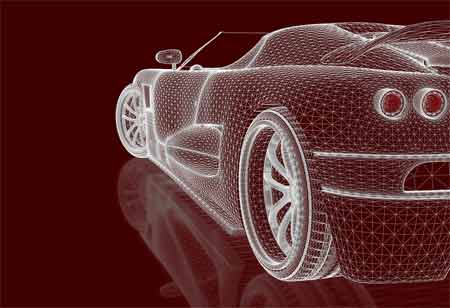THANK YOU FOR SUBSCRIBING
THANK YOU FOR SUBSCRIBING
Be first to read the latest tech news, Industry Leader's Insights, and CIO interviews of medium and large enterprises exclusively from Auto Tech Outlook

By
Auto Tech Outlook | Thursday, December 19, 2024
Stay ahead of the industry with exclusive feature stories on the top companies, expert insights and the latest news delivered straight to your inbox. Subscribe today.
Autonomous driving promises to revolutionize transportation. Success requires new R&D, customer-focused strategies, and adapting to market demands.
Fremont, CA: The growing fascination with autonomous vehicle (AV) fleets underscores a significant shift in transportation dynamics, attracting substantial investment. Despite the challenges that have hindered the widespread deployment of autonomous driving (AD) technology, the potential for AD to transform consumer behavior and societal norms remains potent.
A fundamental reassessment of business models and practices is necessary for manufacturers and suppliers to navigate the evolving landscape of autonomous passenger vehicles effectively. This entails a strategic pivot towards software-centric development methodologies that leverage fleet data to create adaptable and feature-rich vehicles tailored for diverse market segments. By decoupling hardware and software development within the AD platforms and maximizing the reuse of AV architectures, companies can achieve substantial cost efficiencies in design.
A consumer-centric go-to-market approach is imperative. Companies should explore various ownership models and sales strategies while considering the entire lifecycle of autonomous vehicles. Moreover, organizational structures must support and drive these transformative initiatives.
Success in the AD space demands a paradigm shift; traditional methodologies fall short in this complex environment. Manufacturers must enhance their capabilities, particularly in software engineering, to manage the intricacies of Level 3 (L3) and Level 4 (L4) autonomous driving stacks. This necessitates more stringent control over the entire ecosystem and fosters collaborative development of hardware and software components, including processors and neural networks.
Leading manufacturers should pursue flexible, reusable architectures for AD by adopting a holistic approach to developing AD functionalities and products. Competitive viability will hinge on the ability to implement straightforward upgrade processes. Establishing robust strategies for fleet data acquisition, identifying relevant testing scenarios, and harnessing this data for training and validating AD systems is critical.
Additionally, to mitigate consumer apprehensions regarding AD, dealers, and manufacturers must effectively address concerns rooted in a lack of experience with autonomous technologies. The plethora of conflicting narratives surrounding the benefits and safety of AD can lead to consumer confusion. Enhanced sales training for personnel is essential for effectively addressing client inquiries and elucidating the nuances of AD systems.
Promoting the AD platform through test drive initiatives can enhance consumer familiarity. Transitioning from a single licensing model to subscription frameworks can increase the affordability of AVs and generate a steady revenue stream. Revenue models such as pay-per-use, one-time purchases, and subscriptions present substantial profit opportunities, necessitating agile go-to-market strategies.
Business case assessments must adapt to incorporate new revenue streams from these alternative pricing models. Manufacturers should consider upselling advanced systems, ongoing software maintenance, and upgrade options as key components of their sales strategies. While upfront investments for integrating AD technology may rise, the prospects for increased customer engagement and long-term revenue are significant.
At the core of AD technology is a reliance on robust software, which necessitates exceptional coding expertise, streamlined development workflows, and advanced simulation and validation capabilities. Implementing best-in-class tools and efficient processes is crucial, as resource allocation increases the potential for complexity and fragmentation.
Suppliers must realign with the evolving industry benchmarks for success in light of intensifying competition for comprehensive full-stack solutions. Offering a spectrum of delivery options—from standalone hardware to integrated hardware-software solutions—can unlock new business opportunities. Access to extensive fleet data is paramount in developing cutting-edge AD systems that meet market demands.
The rapidly evolving AD landscape is rife with both opportunities and uncertainties. To thrive, businesses must establish clear strategic plans, prioritize a compelling value proposition, and remain attuned to customer needs. Achieving success in the autonomous driving sector necessitates acquiring critical capabilities, fostering external partnerships, and regularly assessing initial conditions against long-term strategic goals.
 Copyright © 2025 AutoTech Outlook. All Rights Reserved | Privacy Policy | Subscribe | Sitemap | About us | Feedback Policy | Editorial Policy
Copyright © 2025 AutoTech Outlook. All Rights Reserved | Privacy Policy | Subscribe | Sitemap | About us | Feedback Policy | Editorial Policy 



